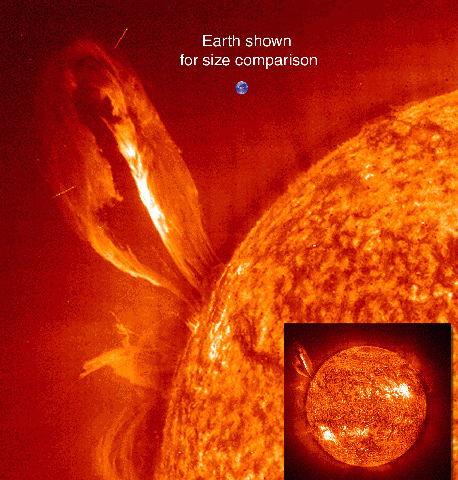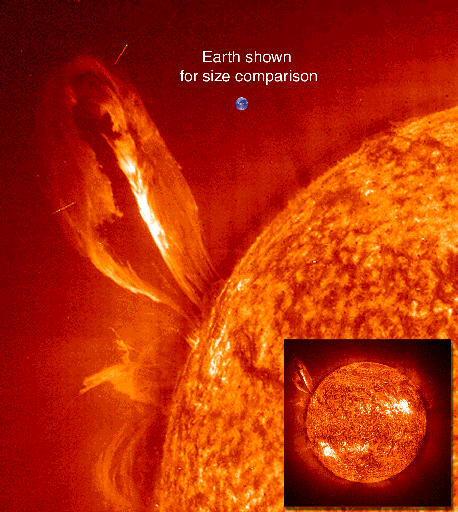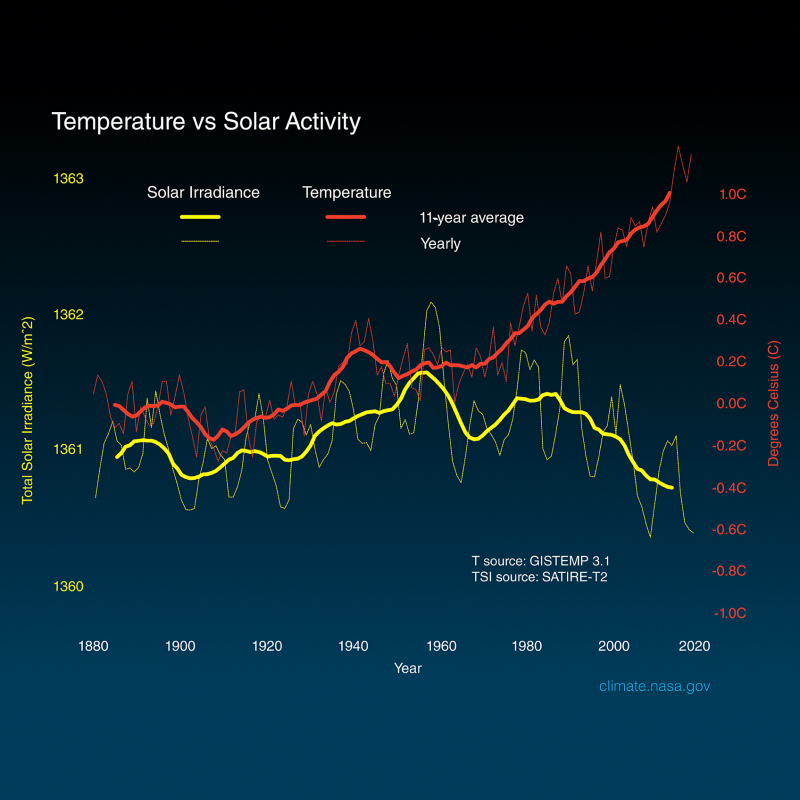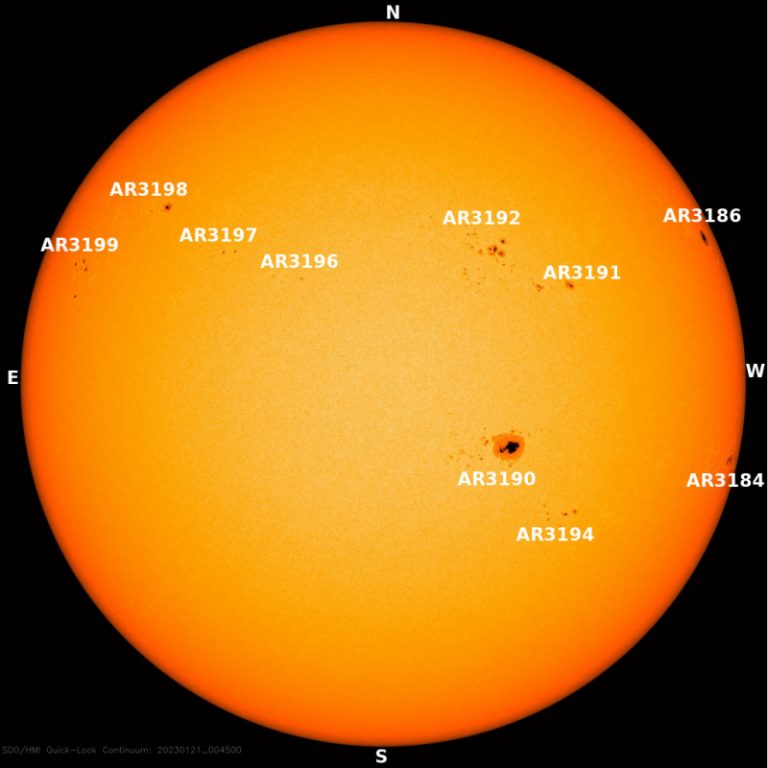
The Sun is 150 million kilometers (93 million miles) away from the Earth (this distance varies slightly throughout the year because the Earth’s orbit is an ellipse and not a perfect circle).
The Sun is an average star – there are other stars which are much hotter or much cooler, and intrinsically much brighter or fainter. However, since it is by far the closest star to the Earth, it looks bigger and brighter in our sky than any other star. With a diameter of about 1.4 million kilometers (860,000 miles) it would take 110 Earths strung together to be as long as the diameter of the Sun.
The Sun is mostly made up of hydrogen (about 92.1% of the number of atoms, 75% of the mass). Helium can also be found in the Sun (7.8% of the number of atoms and 25% of the mass). The other 0.1% is made up of heavier elements, mainly carbon, nitrogen, oxygen, neon, magnesium, silicon and iron. The Sun is neither a solid nor a gas but is actually plasma. This plasma is tenuous and gaseous near the surface, but gets denser down towards the Sun’s fusion core.
Stars like the Sun shine for nine to ten billion years. The Sun is about 4.5 billion years old, judging by the age of moon rocks. Based on this information, current astrophysical theory predicts that the Sun will become a red giant in about five billion (5,000,000,000) years.
Learn more about the Sun »
IMAGE CREDIT: SOHO (ESA & NASA)





